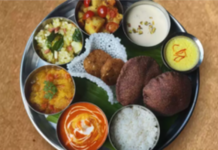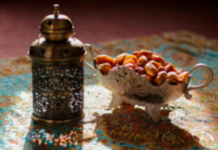BOSTON—When it comes to the state of Indian cuisine in the United States, there is probably noone better to express his or her opinion on this topic than master chef Suvir Saran, who is credited with making the flavors of India accessible to American cooks and is author of three notable cookbooks.
Saran, who will be speaking at the Museum of Fine Arts in Boston on Wednesday, spoke with INDIA New England News about what is good and bad about the Indian food in the United States. During his talk at the MFA, he will focus on how India and the world have impacted the world of art and food. He said that people may look at a foreigner as a foreigner, but once they eat their food “their human factor comes out.”
After studying art in Bombay, Saran ventured to New York in 1993 to continue at the School of Visual Arts. Eventually, he transformed his favorite pastime of cooking and entertaining his friends into a catering business, the beginnings of his remarkable, multi-pronged culinary career. Having triumphed in the New York restaurant world with Devi [the first Indian restaurant awarded a Michelin star], he penned three acclaimed cookbooks and held a five-year adjunct professorship at NYU’s Department of Nutrition & Food Studies.

He currently sits on the nutrition advisory board of Brigham and Women’s Hospital, presides as chairman of the Asian Studies Center – World Cuisine Council of the Culinary Institute of America, and practices organic/heritage breed farming in upstate New York. He is an in-demand guest speaker, educator and a frequent contributor to notable periodicals such as The Wall Street Journal. Saran has been a featured judge on the Food Network’s Iron Chef and Next Iron Chef, and achieved break-out stardom on Bravo’s Top Chef Masters by offering a healthful alternative to the requested bacon cheeseburger.
Saran said there three good things about the Indian food in the United States.
“The first things is that the world is full of adventurous people who keep giving us chance after chance to wow them with food that will last beyond just a trend and translate into the mainstream,” Saran said. “Number two is that we are lucky that people associate India with Mahatma Gandhi. That gives us access to a broad audience affording us a generally friendlier welcome.”
The third good thing is that with the Indian diaspora having spread its wings far and wide, chances are that most people have heard of someone Indian or seen them or worked with them.
“These are the good things about Indian food. It is, when cooked by a self-respecting Indian, at once fresh, seasonal and regional. When prepared in the traditions of these tenets, it most naturally also falls into the realm of mindfulness and being full of everything that supports general wellness and good health.”
Now the three bad things: 1 Butter Chicken / Chicken Tikka Masala; 2 Naan; and 3 Dal Makhani.
“Till Indian cuisine can do a total flip on this self-destructive love affair with dishes like those mentioned above, we will only be gyrating our hips to the tune of always being “the next rising cuisine” and not be the most familiar and sought after cuisine,” Saran said. “If Idli and Dosa are our DNA from Southern India and Butter Chicken and Dal Makhani the DNA from the North, we are only selling our cuisine as a one trick pony.”
He said India has a mind boggling richness of diversity. Whilst other peoples and cultures have to have mottos like “E pluribus unum” Indians live and breathe in diversity.
“We now need to take pride in our multi-cultural, ethnic, linguistic, geographic identities and embrace them all as Indian. Then use from them broadly and cherry pick favorites that make sense to be on seasonal menus or create temples to different regional cuisines,” Saran said. “We are most fortunate that most basal concoctions, that might not have stemmed from any place of pride or tutelage found both acceptance and celebration in lands near and far. But flukes like trends, do not follow or lead from or to any place of long standing.”
Saran said that a quarter century living in New York has shown him much to be proud of India.
“My love affair with India begins as the plane takes off for New York from New Delhi and lasts until when I land next in India. The India I love and the India that has the foundations of sustainable living and functioning, is a rather tangible idea that had existed, even if other forms, at other times, but the models that worked give us ideas that had legs and we can now run with them, engineered with 21st century engines, and surpass the finish lines that we can see in the farthest future. “
He said Indians need to go back to that ancient drawing board where the Indian populace was relatively poor or perhaps moderately rich.
“In that time animal based proteins were a luxury ingredient. Ghee was used sparingly, meats were a once a week indulgence and whole grains and vegetables were the mainstay and seasonality and regionaity were not buzz words but the mainstay,” Saran said. “The dining table was the epicenter as food was the lubricant keeping the engine fueled by diversity, operating mostly rather smoothly.”














I honestly expected more insightful “3 good things”.
The 3 bad things I kind of agree. We have used it till the record is all worn out.
We have Goan Cuisine, South Indian Cuisine (I know there are nuances but I don’t know them well), Gujarati Cuisine, Bengali Cuisine, Punjabi Cuisine, Marwari Cuisine, Parsi Cuisine. The list is unending.
A good restaurant could rotate this on a weekly basis and create such a fresh new exposure of India to the locals.